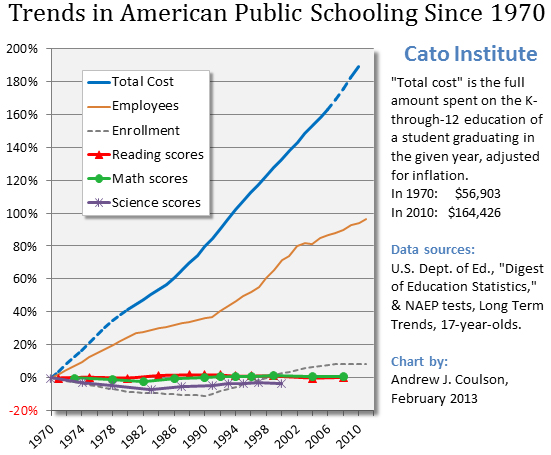Why do we have the axes that we have and why do some people adopt one axis over another? Is it nature, nurture, free will or something else? Is it is more than just group identity and signalling?
I think that the oppressor-oppressed axis must have very deep roots in human nature. I look at the Passover story of Pharoah and the Jews as a story that is readily told in terms of that axis. I know, I know, it can be read in terms of freedom and coercion also, but it’s not as if the “happy ending” frees everyone.
I also think that the civilization-barbarism axis has roots that go deep, because it ties in with xenophobia. It is common to view “the other” as barbaric, and therefore to view the prospect of defeat by the other in cataclysmic terms.
Perhaps it is the freedom-coercion axis that is most unnatural. Most people think that government has existed and always will exist. They are not necessarily wrong. And my guess is that most Americans feel that, on balance, state power is exercised for them rather than against them. Again, they are not necessarily wrong. I would guess that while libertarians raised objections to the way the police in Boston handled the aftermath of the Marathon bombing, if you were to take a poll, the support for the authorities among the public at large would be overwhelming.
In answer to the third question, I think that the axes are most useful for group identity and signalling. Framing an issue in terms of the axes is a way to dog-whistle to those with whom you agree. Characterizing those who disagree with you as being at the opposite end of your preferred axis (“they only want to help the rich!” “they just want to tear down America!” “they just want a police state!”) is a way to reinforce your own group identity.
I don’t know how to predict your preferred axis based on some other characteristic. But I will predict that articulate, politically-engaged people in the U.S. will tend to gravitate toward one axis, and to use that axis for group-identity and signaling purposes. I do believe that it is human nature to take mental shortcuts and to pursue status within a tribe. As Brink Lindsey pointed out at lunch at Cato yesterday, the more we learn from experimental cognitive psychology, the more we see that we are prone to biased thought processes. Perhaps as more people become aware of these biases, they will be more willing to detach themselves from any particular axis.
What areas do the axes agree on and why? Do we at least agree on the liberal project (broadly defined) of individual rights, democracy and science, but disagree on the right mix?
I would not think of the axes as philosophical pillars. Again, I think they perform tribal functions, including group identity and signaling. Certainly, there are general areas of agreement among all three groups. But “individual rights” mean different things to different tribes: one tribe believes in a “right to health care” and the other ones don’t; One tribe believes in the “right to life” (vs. abortion) and the other ones don’t; One tribe believes in the “right to ingest whatever substance he or she wants” and the other ones don’t.
Do people change axes or moderate their views over time? What might cause a change or moderation?
I have changed axes over time. In 1970, I was with Noam Chomsky, who explained the Vietnam war in oppressor-oppressed terms, as driven by American corporations seeking to dominate Vietnamese markets. I think that if you are capable of realizing that your tribe’s position is silly (as this one was), you are capable of change or moderation. And I think every tribe has taken a silly position at one point or another (and by the way, I still think that the Vietnam War was a terrible mistake, but the process by which that mistake was made was complex.)
in what circumstances will the rent-seekers triumph over the technocrats in affecting policy? Virtually every time? Or can the technocrats rally enough support from their drummer pals to defeat them, and if so, in what circumstances?
My father, who unlike me was a political scientist, would have taken a hard line on this one. He would have said that the rent-seekers (he would have called them insiders or interest groups) win every time. The tribal drummers serve as “useful idiots,” creating drama that captures the imagination of the public, while in the back rooms the insiders divide up the goodies. I should note also that he did not feel outraged by this. He just thought it was the natural order of things. In fact, if you had asked him, “What should I personally do about this?” his answer probably would have been “Become an insider!”
The technocrats can operate along some margins, particularly in areas where rent-seekers give them some slack. But when the stakes in terms of rents are high, you should always bet on the rent-seekers. So the Fed has a little slack in terms of choosing to pursue slightly higher or lower inflation. It probably had a lot less slack in choosing whether to bail out Citi and Goldman.
